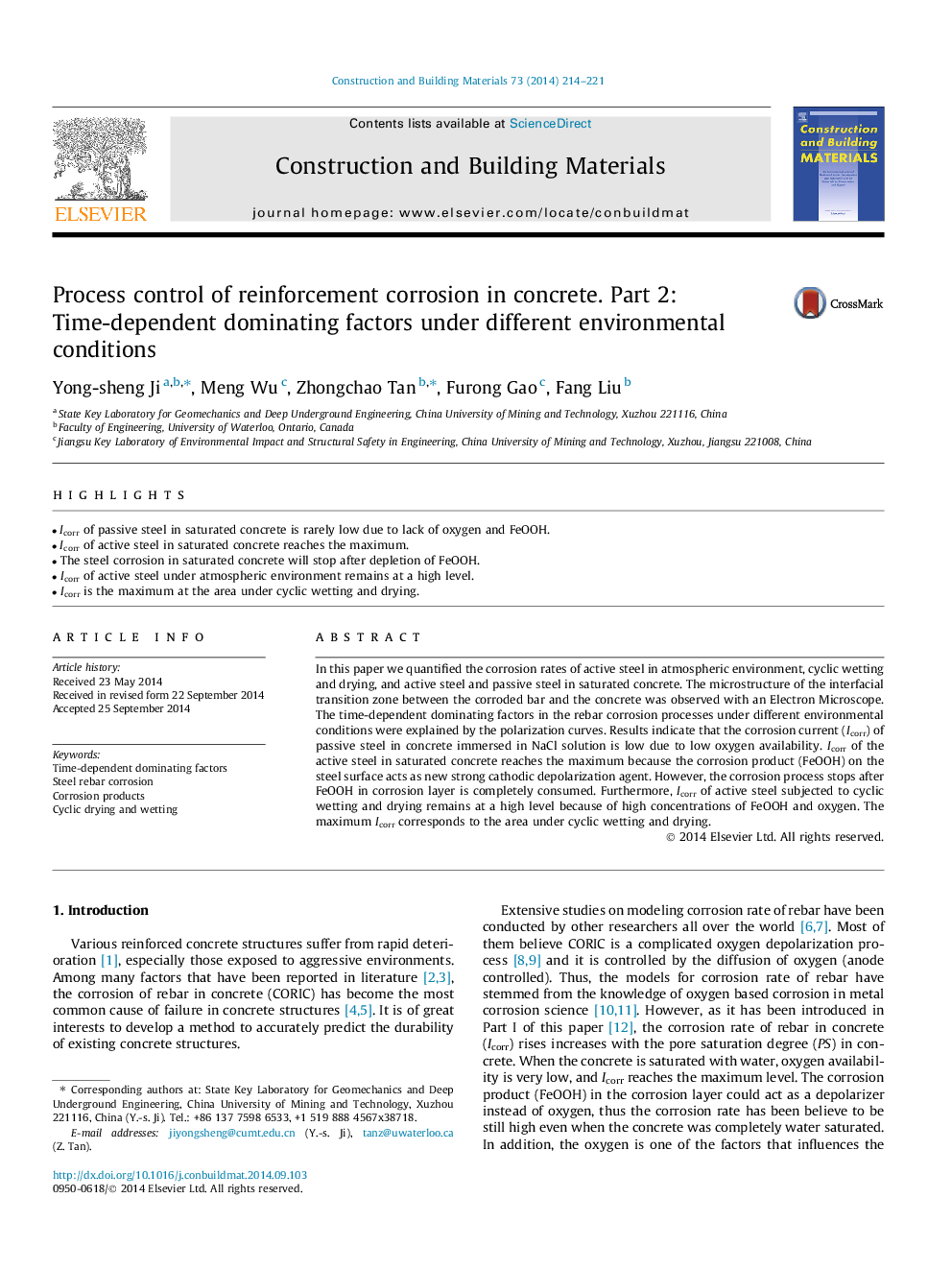| Article ID | Journal | Published Year | Pages | File Type |
|---|---|---|---|---|
| 6722078 | Construction and Building Materials | 2014 | 8 Pages |
Abstract
In this paper we quantified the corrosion rates of active steel in atmospheric environment, cyclic wetting and drying, and active steel and passive steel in saturated concrete. The microstructure of the interfacial transition zone between the corroded bar and the concrete was observed with an Electron Microscope. The time-dependent dominating factors in the rebar corrosion processes under different environmental conditions were explained by the polarization curves. Results indicate that the corrosion current (Icorr) of passive steel in concrete immersed in NaCl solution is low due to low oxygen availability. Icorr of the active steel in saturated concrete reaches the maximum because the corrosion product (FeOOH) on the steel surface acts as new strong cathodic depolarization agent. However, the corrosion process stops after FeOOH in corrosion layer is completely consumed. Furthermore, Icorr of active steel subjected to cyclic wetting and drying remains at a high level because of high concentrations of FeOOH and oxygen. The maximum Icorr corresponds to the area under cyclic wetting and drying.
Keywords
Related Topics
Physical Sciences and Engineering
Engineering
Civil and Structural Engineering
Authors
Yong-sheng Ji, Meng Wu, Zhongchao Tan, Furong Gao, Fang Liu,
